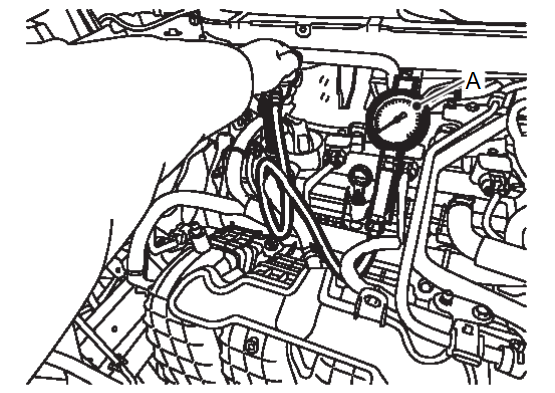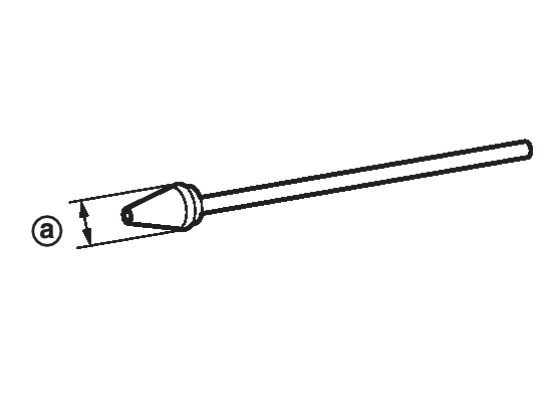Inspection
1. Warm up engine thoroughly. Then, stop it.
2. Release fuel pressure. Refer to Work ProcedureWork Flow .
.
 .
.3. Disconnect fuel pump fuse to avoid fuel injection during measurement. Refer to How To CheckHow To Check .
.
 .
.4. Remove ignition coil and spark plug from each cylinder. Refer to Removal and Installation .
.
 .
.5. Connect engine tachometer (not required in use of M.U.T.-III SE).
6. Install compression tester (A) with adapter onto spark plug hole.
7. With accelerator pedal fully depressed, turn ignition switch to “START” for cranking. When the gauge pointer stabilizes, read the compression pressure and engine rpm. Perform these steps to check each cylinder.
| Compression pressure | : Refer to General SpecificationGeneral Specification . . |
| caution | Always use a fully charged battery to obtain specified engine speed. |
- If the engine speed is out of specified range, check battery liquid for proper gravity. Check engine speed again with normal battery gravity.
- If compression pressure is below minimum value, check valve clearances and parts associated with combustion chamber (Valve, valve seat, piston, piston ring, cylinder bore, cylinder head, cylinder head gasket). After the checking, measure the compression pressure again.
- If some cylinder has low compression pressure, pour small amount of engine oil into the spark plug hole of the cylinder to re-check it for compression.
- If the added engine oil improves the compression, piston rings may be worn out or damaged. Check piston rings and replace if necessary.
- If the compression pressure remains at low level despite the addition of engine oil, valves may be malfunctioning. Check valves for damage. Replace valve or valve seat accordingly.
- If two adjacent cylinders have respectively low compression pressure and their compression remains low even after the addition of engine oil, gaskets are leaking. In such a case, replace cylinder head gaskets.
8. After inspection is completed, install removed parts.
9. Start engine, and confirm that engine runs smoothly.
10. Perform trouble diagnosis. If DTC appears, erase it. Refer to M.U.T.-III SE FunctionCONSULT Function .
.
 .
.![[Previous]](../../../buttons/fprev.png)
![[Next]](../../../buttons/fnext.png)

 (rubber portion) is smaller than 20 mm (0.79 in) in diameter. Otherwise, it may be caught by cylinder head during removal.
(rubber portion) is smaller than 20 mm (0.79 in) in diameter. Otherwise, it may be caught by cylinder head during removal.